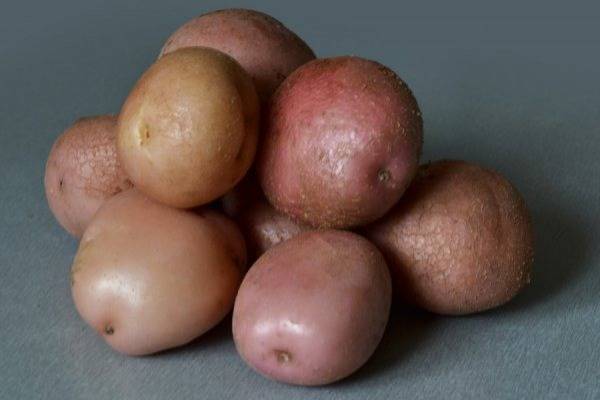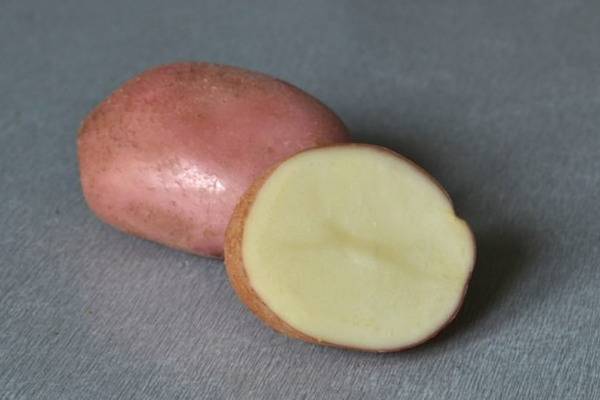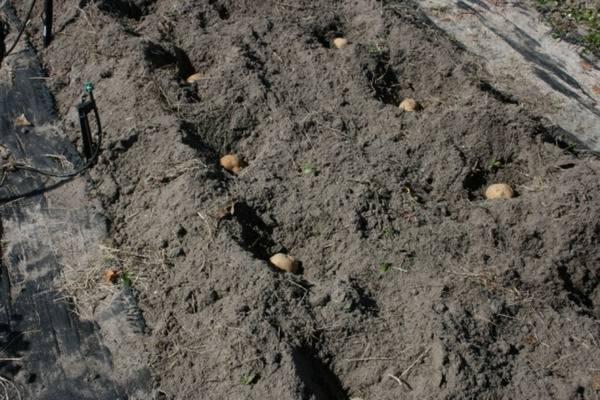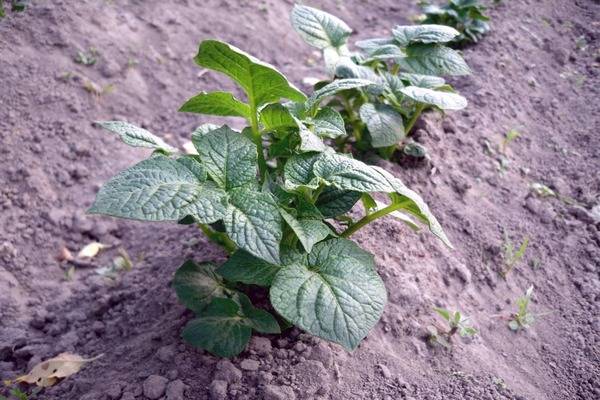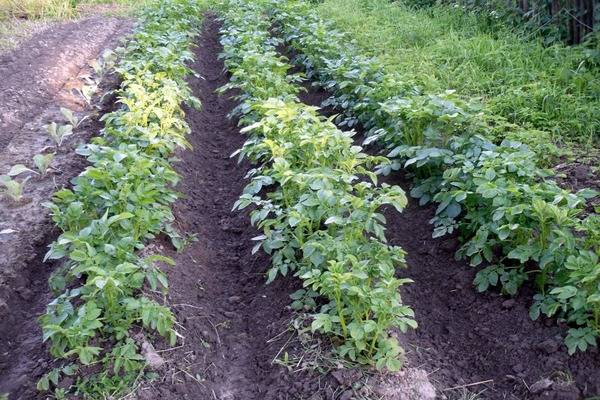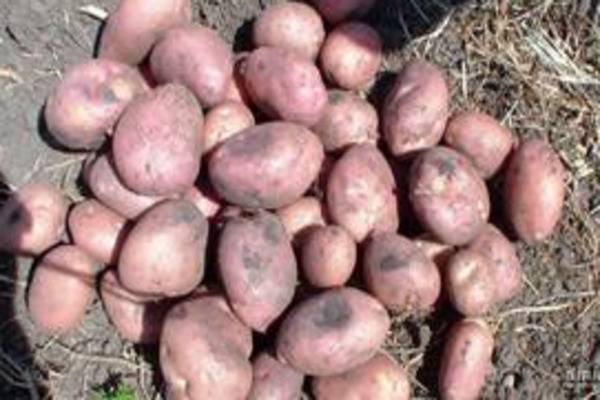Content
Romano variety Dutch selection known since 1994. It is excellently grown by both farms and summer residents, gardeners. Suitable for breeding in Ukraine, in many regions of Russia (Central, Central Black Earth, South, Far East).
Description
Romano potatoes are a representative of mid-early table varieties. The crop can be harvested 75-90 days after planting the tubers. The stems are erect, the flowers are medium-sized, reddish-purple.
Smooth tubers have a light pink skin. The flesh on the cut has a creamy shade (as in the photo). Large round-oval potatoes weigh 80-90 g and have a few eyes of medium depth. The yield of one bush is about 700-800 g (about 8-9 pieces). The starch content is 14-17%.
Advantages and disadvantages
The Romano potato variety stands out for its high yields and is popular with gardeners and farmers for many reasons.
Dignity |
|
disadvantages | Romano potatoes are sensitive to low temperatures and may suffer frost damage. There is also a risk of damage from scab or nematodes. |
When choosing this variety, one must take into account the thick skin of the tubers. On the one hand, it is excellent protection during digging and storage. On the other hand, it takes some effort to peel potatoes.
Landing
The main feature of Romano potatoes is that the seed is planted in well-heated soil. They choose a time when there is no threat of late frosts - the second half of May. The ideal temperature is + 15-20˚С. This condition provides a friendly emergence of seedlings and a high yield of root crops.
Tubers are treated with growth stimulants (Fumar, Poteytin) before planting. Spraying Romano potatoes with special means increases yields, ensures early germination, protects root crops from the Colorado potato beetle, and increases resistance to viral diseases. The most affordable and simple option is literally before planting to water the potatoes with wood ash diluted in water.
Since Romano tubers are large enough, you can cut them into pieces when planting. For cutting potatoes, a sharpened knife is used, which is periodically treated with a solution of potassium permanganate. The division of potato tubers is carried out immediately before planting. If you do this earlier, then the cut parts of the potato can rot. In the case of planting small fruits, it is necessary to put 2-4 tubers in the hole.
For potato beds, open and well-lit areas are distinguished. If the groundwater is located high in the garden, then the potato ridges are made high or form ridges.
Care
The Romano variety perfectly tolerates heat, short drought. Therefore, during the season, you can water the beds 2-3 times. Periodically, potato plantings are weeded, loosened.It is advisable to do this work after moistening. Loosening of the soil prevents its rapid drying, provides air access to the roots, levels the soil and destroys the soil crust. The first time it is possible and necessary to loosen the soil about a week after germination.
Hilling and feeding
During the growth period, it is recommended to huddle the beds two or three times. It is better to combine this process with weeding. The first time sprouts are sprouted with a height of 15-20 cm. After two to three weeks, the beds are re-spilled (before the flowering of the culture). It is better to set aside time for this on a cool day, after rain or watering. If the weather is hot, then hilling Romano potatoes is better in the evening.
This procedure cannot be neglected, since several tasks are solved in this case: a volume of soil is created for additional formation of root crops, the soil is loosened, and the moisture of the earth is preserved.
The potato variety Romano is very sensitive to soil nutrition. On scanty lands, it will not be possible to collect a large crop, so they must be fertilized.
As a rule, feeding is applied in three stages:
- When shoots appear, specially moistened soil is watered with organic compounds. Manure or poultry manure solutions are suitable. The fertilizer is preliminarily insisted for two days, and then a solution is prepared in a ratio of 1:15 (manure and water, respectively). For one bush of potatoes of the Romano variety, 0.5-0.7 liters is enough.
- In the budding phase, a mixture of 4 tbsp. l of ash and 1.5 tsp of potassium sulfate (this amount is scattered on a square meter of earth).
- During the flowering period, it is enough to scatter 1.5 tbsp. liters of superphosphate per square meter.
Romano potatoes strongly absorb nutrients from the soil. Therefore, high-quality and timely feeding is the key to a bountiful harvest.
Diseases and pests
The Romano variety is moderately resistant to Rhizoctoniae, but is easily affected by common scab or potato nematode.
| Signs of defeat | Treatment methods |
Potato nematode - worms that infect the root system. The first signs of infection appear 40-50 days after planting. | The stems become weak, turn yellow prematurely. Very few tubers are tied or they are absent altogether. The defeat occurs through planting diseased tubers, when planting potatoes in infected soil | Of the chemical special preparations, the use of Bazudin gives an excellent effect. But preventive measures are of greater importance: pre-planting treatment of Romano potatoes with a solution of potassium permanganate; compliance with crop rotation; planting around the perimeter of tansy, aster, white mustard |
Common scab is a fungal disease that affects the skin. Leads to a deterioration in quality, loss of presentation of fruits, increased waste | The disease develops from the moment the potato blooms. Reasons for the appearance: infected planting material or soil. Favorable conditions for emergence and distribution - shallow arrangement of tubers, hot weather | First of all, crop rotation must be observed. Trichodermin is used for dressing seed and soil. |
Bushes affected by some diseases are recommended to be marked so that the tubers are not left for storage. All the more, such potatoes should not be used on the next planting.
Harvesting
The first root crops can be dug up at the beginning of July. But the main harvest time is in early September. About a week before harvesting Romano potatoes, cut off the tops... This technique will help strengthen the skin and increase the density of the tubers.
Since the skin of Romano potatoes is quite dense, it must be dried for 3 to 5 days.If the weather is dry, then you can leave the crop right on the site. During the rainy season, the harvested roots are laid out under special sheds.
Romano potatoes are perfectly stored, transported and suitable for cooking various dishes. Therefore, the variety is popular with gardeners and farmers.
Testimonials
